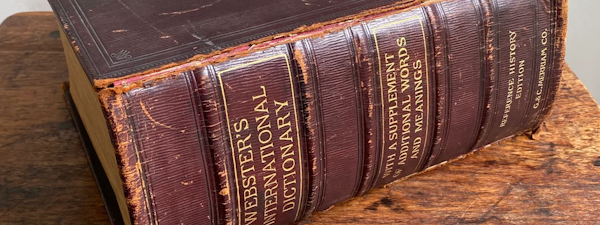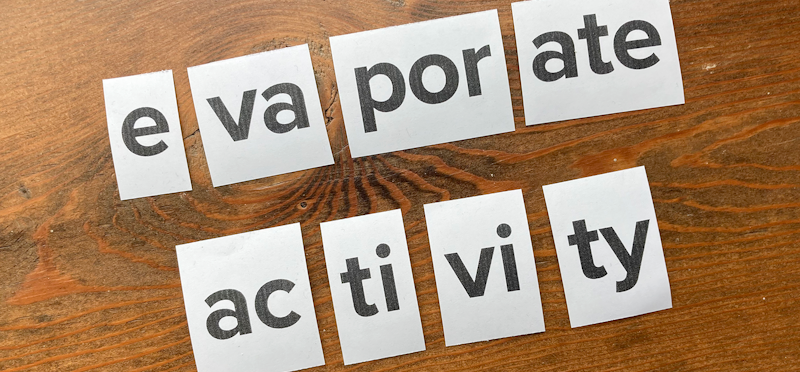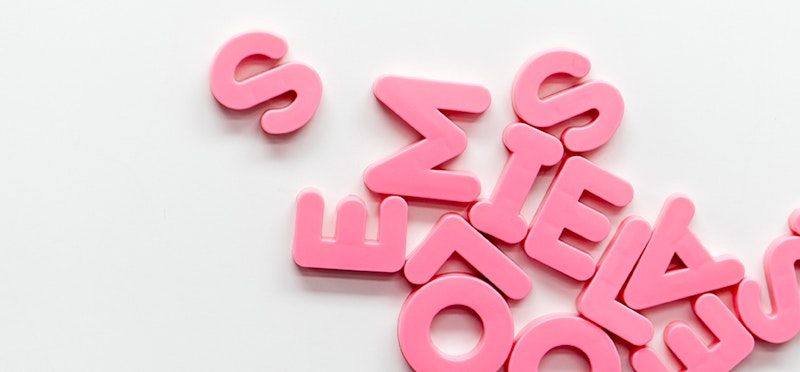
One of the more popular methods for teaching a child to read multisyllable words is based on what are called the six syllable types. The method calls for a child to examine long unfamiliar words, identify individual syllables based on the syllable type, and then blend the result to decode the word. These six syllable types include:
- Open Syllable
- Closed Syllable
- Vowel+e Syllable
- Vowel Team Syllable
- R-Controlled Syllable
- Consonant+le Syllable
The Six Syllable Types
I'll discuss the first two types, Open Syllables and Closed Syllables, in just a moment.
The third type, the Vowel+e Syllable, is represented by a split vowel digraph such as the i-e in hive. Awareness of this syllable type prepares a child to read words like livelihood and behave.
The fourth type, the Vowel Team Syllable, features a vowel sound that is represented by a vowel digraph such as the ow in grow or the igh in light.
The fifth type, the R-Controlled Syllable, features an r-controlled vowel sound like the or in fortune or the eer in cheerful.
And the sixth type, the Consonant+le Syllable, is usually found at the end of a word. Examples are pur-ple, mar-ble, and un-cle.
Each of The Last Four Types Deal with Code Knowledge
Now take a moment to re-examine the last four of the six syllable types. Every one of them deals with code knowledge specifically. Kids have to learn the concept of a split vowel digraph to read one-syllable words like made, tide, rose, and cute. They have to learn the vowel digraphs to read team, howl, fight, eight, and hundreds of other one-syllable words. The same goes for the r-controlled vowel spellings in words like form, farm, turn, shirt, learn, and work.
When they do get into two-syllable work, they then need to be taught that the digraph le is two sounds and is pronounced like pull without the /p/ sound. In the notation used here, the two sounds are /oul/+/l/. (The reason for teaching le as a digraph despite it representing two sounds is because the vowel spelling and the consonant spelling are reversed.)
Thus, with the exception of the easy-to-teach digraph le, the remaining three syllable types should have been covered during one-syllable work. At that point, all you should have to teach is the concept that every syllable contains one – and only one – vowel sound. That assumes, of course, that dividing up a word into formal syllables is a good reading strategy.
Now Consider Open and Closed Syllables
The first type, a closed syllable, is a syllable that has, per the dictionary, a consonant letter or two added on after the vowel spelling. Take a word like habit. A dictionary will show the syllables as hab-it. When that’s the case, the syllable is called a closed syllable, and it’s assumed that the vowel sound is the short sound of the letter a (or the First Vowel Sound in the OnTrack Reading programs).
The second type, an open syllable, stops with the vowel spelling, so a word like haven is shown to have the syllables ha-ven in the dictionary.
All well and good, but this method of teaching a child to read a multisyllable word brings up an essential question: How is the child supposed to know whether they’re facing a closed or open syllable? There is virtually nothing to rely upon, other than to test both vowel sounds. And note, only the short and long sounds of a letter like the a in habit and haven are options. As the syllable is either closed or open.
What about the word father where the letter a represents its Third Vowel Sound, the /o/ sound found in want?
And it can get even more confusing. The dictionary will break the single /b/ sound in words like rabbit into two syllables rab-bit, so syllables don’t even always make sense to a child.
Summing Up the Six-Syllable Method
The six-syllable method was obviously devised by someone convinced that dividing a word into formal syllables was an effective strategy for decoding unfamiliar multisyllable words. Its popularity has grown, largely because no one has found a better way.
However, as highlighted above, what a child really needs is a solid grasp of vowel spellings and a strategic approach to testing the vowel sounds in both open and closed syllables. The same goes for other syllable types where the vowel spelling can represent multiple sounds. The ow spelling has two, for example, /ow/ and /oe/.
A Better Way: Decoding Chunk by Chunk
Instead, a child should be taught the code – meaning, the viable pronunciation options for any particular spelling. He should then be taught a simple method of progressing through a word, from left to right, following simple rules that a six-year-old can learn to apply, while testing the various options for the spellings that have more than one possibility.
He should also be taught to break words into “chunks,” stopping (with a few key exceptions) after the vowel sound in each chunk. Armed with enough code knowledge, he will be able to easily learn to march left-to-right through words of many syllables, testing the vowel sounds and retesting vowel sounds (and sometimes consonant sounds) when his first attempt fails to yield a recognizable word.
Imagine a child reading the phrase “the growling dog.” Applying the chunk-by-chunk method, he divides it into grow-ling, and then pronounces grow to rhyme with blow, resulting in a nonsense word. Recognizing this, he retests the vowel sound, making grow rhyme with how – applying his knowledge that the “ow” spelling can represent either sound, and easily recognizes the word.
A couple years later that same child encounters the word maternal in his reading. He chunks it using his well-worn strategy as ma-ter-nal, tries the /a/ sound, then the /ae/ sound, and finally the /o/ sound for the letter a and finally recognizes a word he’s heard before.
He didn't bother with syllables, has seen the al ending many times by then, has known the sound of er for years, and just marches through the word testing the spellings that can represent more than one sound. He can also tell you the three sounds of the letter i and in what orders he tests them (/i/ie/ee) and the four sounds of the digraph ou along with the order he tries them (ow/oe/oo/u). He knows this because he became so confident in the strategy that he's been using it for the past two years.
A Few Serious Questions for Teachers
Had you ever heard of the six-syllable method before learning it as a teacher? Second question: If you were actually taught it in school, did you really use it to figure out the thousands of word you now fluently read? If you’re being honest, your answer to the second question is “no” even if you’re young enough that you learned about the six-syllable-type method when you were in grade school.
I would wager that 95-99% of adults can’t tell you the six syllable types, much less the strategy, and yet the vast majority of them learned to read multisyllable words fluently. How did they do that?
The six-syllable method of decoding multisyllabic words may be a popular method to teach, but it’s not relied upon by many students. Most of you currently reading this never used it. Some of you first encountered the method here today, and yet somehow you learned read multisyllable words fluently.
Other methods are also taught. For instance, one method teaches a child to look for a word within a longer word, and to recognize familiar prefixes (like re, de, dis, un, etc.) and suffixes (like er, ed, ing, etc.) That method has a child bouncing back and forth within a word while attempting to decode it, a terrible visual habit to encourage when reading. That said, learning the various meanings of prefixes, suffixes, and roots is important for comprehending the meaning of many words.
Conclusion
Existing methods for teaching children to read multisyllabic words generally fall short. These ineffective strategies can lead children, especially those who typically struggle with reading, to rely on an all-too-common and long-held strategy: guessing. And unless a method proves consistently successful enough to outweigh their reliance on guessing, they're likely to stick with it.
Fortunately, that method exists. You can find it here on the OnTrack Reading website. It’s been taught by the author to nearly two hundred children in one-on-one instruction, and has been used successfully by many others working with students who have struggled with learning to read.
The method is free, with all materials available as downloads here on the website. It's called the OnTrack Reading Multisyllable Method and it works. It’s so easy to teach that one parent says that her older child picked it up and started using it while eavesdropping on lessons being given to a younger sibling.
And if the child isn’t yet comfortable with the vowel spellings and their sounds, the complete phonics program in the Advanced Code Phonics Workbook can be used to address that problem.




